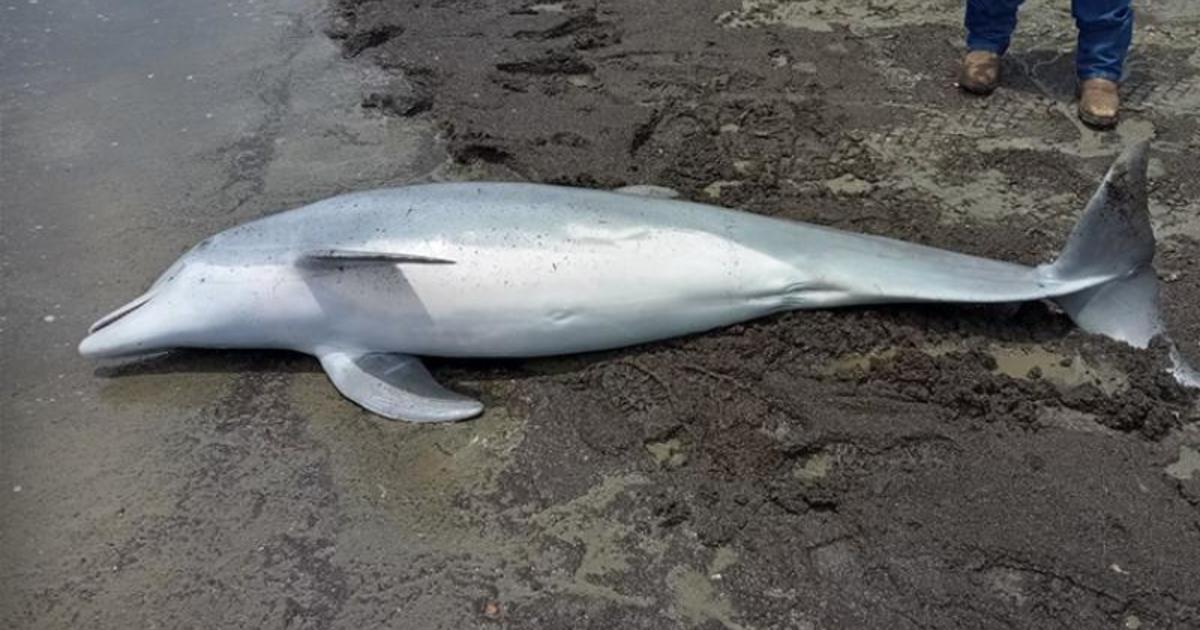Endangered wolf prized for its genetic value found dead in New Mexico
Environmentalists are pushing the U.S. Fish and Wildlife Service to do more to protect Mexican gray wolves after one of the endangered predators was found dead in southwestern New Mexico.
The Western Watersheds Project is among the groups that have been critical of the agency's management of wolves in New Mexico and Arizona, saying illegal killings continue to hamper the population. However, the Fish and Wildlife Service says there have been fewer wolves found dead this year than in previous years.
The agency also pointed to a revised recovery plan for the wolf that was released in early October. The agency was under a court order to revamp the plan to address the threat of human-caused mortality as one of the ways to increase survivability for wolves in the wild.
Federal officials said they could not provide any details about the circumstances of the latest death since it was an ongoing investigation. It's rare that such investigations are ever closed.
"When I first heard the news, I was heartbroken, but now I'm just angry," Greta Anderson, deputy director with Western Watersheds Project, said in a statement. "These are highly social animals with deep family ties and they work together for the whole pack's survival. Anyone who kills a collared wolf is either an inept coyote hunter or a sick human being."
Environmentalists described the male wolf recently found dead near Winston as one of the most genetically-valuable Mexican wolves in the wild. It had been released in 2018 after being born in captivity and then cross-fostered into a wild wolf den as part of an effort to increase genetic diversity.
The wolf and its mate were captured near Reserve in 2021 and relocated with pups to Ted Turner's Ladder Ranch in 2021. That move spurred a legal fight, with ranchers saying they were not notified by the federal government of plans to establish the new pack.
The Ladder Ranch has worked with the Fish and Wildlife Service for years, providing a site for captive wolves and other endangered species projects through the Turner Endangered Species Fund. Across Turner's vast land holdings, that work has ranged from breeding endangered Bolson tortoises to providing habitat for endangered black-footed ferrets and gray wolves in the northern Rockies.
For more than two decades, the effort to return Mexican gray wolves to the U.S. Southwest has been fraught with conflict as ranchers have complained about having to scare away wolves to keep their cattle from being eaten. Many have said their livelihoods and rural way of life are at stake.
Environmentalists say the reintroduction has stumbled as a result of illegal killings, management decisions and challenges stemming from the region's year-round cattle calving season.
Anderson said she noticed the male wolf was missing when officials released the latest public map.
"The good news is that wolf #1693 was able to successfully father two litters of pups, which is a testament to the U.S. Fish and Wildlife Service's willingness to leave him in the wild in 2021 and 2022," she said in a statement. "The bad news is that his ability to continue to contribute to the overall diversity of the wild population was tragically cut short."
A reward of up to $37,000 is available for information leading to the conviction of the killer(s) of Mexican wolves, Western Watersheds Project said.
On Tuesday, the group posted photos of the wolf "family that recently lost its patriarch."
North America's rarest subspecies of gray wolf, the Mexican gray wolf, was listed as endangered in 1976 after being pushed to the brink of extinction. From the 1960s to the 1980s, seven Mexican wolves — believed to be the last of their kind — were captured and the captive breeding program was started.
In 1998, the Fish and Wildlife Service released the first captive Mexican wolves into the Mexican Wolf Experimental Population Area in Arizona and New Mexico and "the resounding howl of the endangered Mexican wolf could once again be heard in the mountains of the Southwest."
The wild population has seen its numbers nearly double over the last five years, with the latest annual census finding nearly 200 Mexican wolves in New Mexico and Arizona. There also are a few dozen in Mexico.
Earlier this month, conservation groups offered a $51,000 reward for tips after an investigation in Washington state revealed six wolves found dead earlier this year had been poisoned.
Also this month, authorities said they are offering a $1,150 reward for information leading to an arrest in the killing of a radio collared bobcat that was part of a research project in Arizona.




